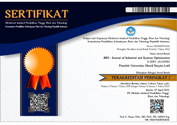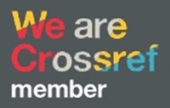PERBAIKAN SISTEM PRODUKSI KARDUS DENGAN PENDEKATAN LEAN DMAI DI PT KEDAWUNG CCB
DOI:
https://doi.org/10.51804/jiso.v1i1.39-46Keywords:
kardus, lean DMAIC, pemeliharaan mesin, waste.Abstract
Kapasitas produksi di PT. Kedawung Setia CCB masih belum sesuai target akibat adanya kegagalan produksi. Oleh karena itu, dalam penelitian ini digunakan pendekatan lean DMAI untuk dapat memenuhi target yang diharapkan. Tahapan metode ini dimulai dengan mengidentifikasi waste yang paling berpengaruh diantara 4 waste yang ada. Kemudian membuat dekripsi sistem dan pareto chart dilanjutkan dengan analisa, RCA dan FMEA untuk mengetahui akar penyebab masalah dan nilai tertinggi RPN. Dari hasil pengolahan data diperoleh, defect sebagai waste yang paling berpengaruh. Nilai Risk Priority Number (RPN) tertinggi sebesar 126 terdapat pada jenis defect berupa karton rusak akibat dari penataan sheet yang kurang maksimal dan mesin yang sering rusak. Oleh karena itu, pada tahap improve perlu dilakukan pemeliharaan mesin. Dari hasil penelitian diperoleh waktu rata-rata pemeliharaan korektif (MCT) pada mesin printing adalah 1,2 jam dan waktu pemeliharaan preventive adalah 1 jam . Waktu rata-rata diantara kerusakan atau MTBF ialah 142,85 jam yang berarti mesin akan mengalami kerusakan setelah rata-rata beroperasi selama 142,85 jam atau 5,9 hari dan nilai ini juga menunjukkan umur operasi mesin.
References
Gaspers, V. (2008). The Excecutive Guide to Implementing. Gramedia Pustaka Utama.
Hines, Peter and Rich, N. (2006). The Seven Value Stream Mapping Tools. International Journal of Operation & Production Management, 17(1), 46–04.
Pande, S. Peter, P. Neuman, Robert, R. Cavanagh, R. (2006). The Six Sigma Way. Yogyakarta: Penerbit Andi, Yogyakarta.
Womack, J. P., & Jones, D. T. (1997). Lean thinking—banish waste and create wealth in your corporation. Journal of the Operational Research Society, 48(11), 1148
Downloads
Published
Issue
Section
License
With the receipt of the article by JISO Editorial Board and the decision to be published, the copyright regarding the article will be transferred to JISO. The copyright transfer form can be downloaded here.
JISO has the right to multiply and distribute the article and every author is not allowed to publish the same article that was published in this journal.
JISO is licensed under a Creative Commons Attribution-ShareAlike 4.0 International License.
Under the following terms:
Attribution — You must give appropriate credit, provide a link to the license, and indicate if changes were made. You may do so in any reasonable manner, but not in any way that suggests the licensor endorses you or your use.
ShareAlike — If you remix, transform, or build upon the material, you must distribute your contributions under the same license as the original.














